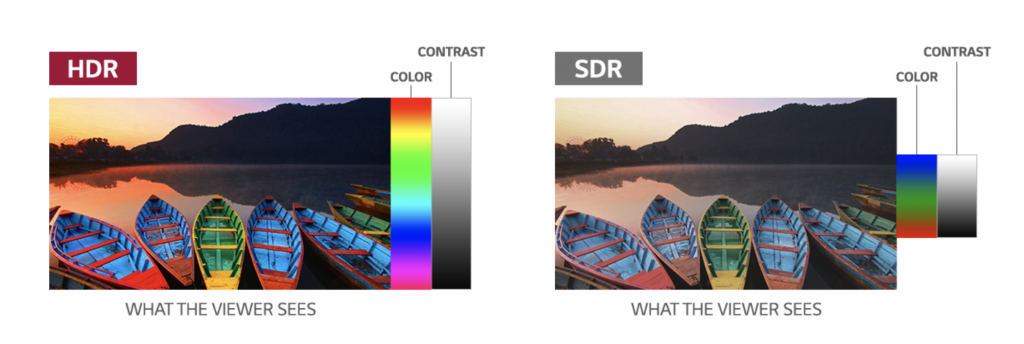
If you’ve been in the market for a new telly, you’ve likely seen the letters ‘HDR’ floating around. If you want to know a bit more about what HDR can add to your viewing experience, this quick and easy guide is for you.
HDR stands for High Dynamic Range. ‘Dynamic Range’ describes the extremes with a TVs contrast (the difference between how dark and bright the picture can get) and the detail within that range. In the past, even though a TV screen may have been able to get very bright or very dim, there was still a limit on how much colour and detail it could display, and formats like DVDs and broadcast television had to work within these limitations.
These old limitations can be bypassed by HDR technology, offering an expansive new world of dazzling colours and rich, deep shadows, closer to the cinema than previously possible. Working in tandem with high-resolution 4K screens (which you can learn more about here), a TV compatible with HDR can ‘translate’ an HDR source, like an Ultra HD Blu-Ray disc or 4K content from Netflix and turn it into a beautiful picture that is a feast for the eyes.

Image: LG
While HDR technically deals specifically with brightness and contrast, it also works hand-in-hand with a colour gamut. A colour gamut is the range of colours that a TV is capable of producing, and when it works together with brightness, it directly relates to how many colours we can see.
Many modern sets have a ‘wide colour gamut’, with some being able to produce upwards of a billion different colours! The best way to imagine this is as if you were a painter – with access to that many colours, your paintings could be almost life-like.
With HDR technology, we can now see images that are much closer to how the directors and producers envisioned, bringing our entertainment to life!
To discuss which Tv would be perfect for your requirements give your local Richer Sounds store a call. They’ll be happy to help! To see our full range of TVs head on over to our website now.





